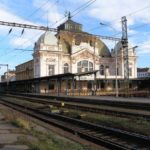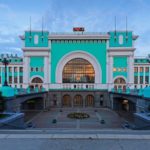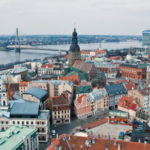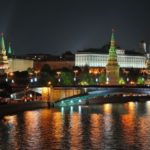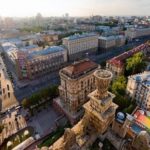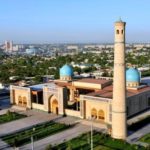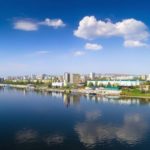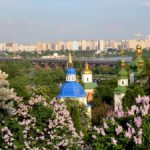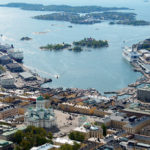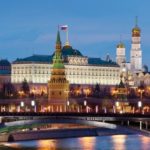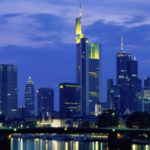55 interesting facts about the Moscow metro
 Millions of passengers travel daily in the Moscow metro, and it is this transport that provides transportation to most of the capital’s population, working regularly year after year, decade after decade. Moreover, the metro is growing after the city, new stations and lines are constantly opening, and it is not without reason that it is considered the best in the world.
Millions of passengers travel daily in the Moscow metro, and it is this transport that provides transportation to most of the capital’s population, working regularly year after year, decade after decade. Moreover, the metro is growing after the city, new stations and lines are constantly opening, and it is not without reason that it is considered the best in the world.
Many metro stations are decorated with stucco, but Novokuznetskaya is the only one on which stucco is even in the tunnel above the escalators.
In 1940, physicists worked at the Dynamo Moscow metro station at night. Located at a 40-meter depth, the station was perfectly protected from radio waves, which, in fact, they needed.
In 1996, due to a joke, hundreds of thousands of people believed in the existence of the fictional station FizTech. In fact, it was students who stuck in the cars new metro schemes, outwardly almost indistinguishable from real ones.
The Moscow metro ring line has been under construction for eleven years.
There are two Smolensk stations and two Arbat stations in the Moscow metro because during the Great Patriotic War two old stations were damaged by a bomb. In secret from everyone, two new stations and a new line were built. But later, in the late 50s, the old stations were restored and reopened.
During World War II, construction continued on the Zamoskvoretskaya, Koltsevaya and Pokrovskaya lines.
During the construction of the Moscow metro, more precisely, when laying new tunnels, a speed of 650 meters per month was achieved. However, metro builders in St. Petersburg achieved speeds of 1200 meters in the same period.
There are more columns at Komsomolskaya station than at any other – there are 146 of them.
On all lines of the Moscow metro, except Butovskaya, the number of wagons in the trains is 6, 7 or 8.
All cars for the Moscow Metro are produced in Mytishchi.
On the Ring metro line in front of the station, the tunnel rises slightly, while at the exit it goes down down. This helps trains easier to slow down and gain speed.
The first metro station on which the turnstiles were installed was Krasnye Vorota.
Mosaics for the Novokuznetskaya station were collected in Leningrad, which at that time was under siege.
In the Moscow metro, the wind constantly walks, not only due to ventilation, but also because trains moving through tunnels push the air like pistons inside cylinders.
At all old metro stations, the doors are very heavy, because during their development, requirements for durability and strength were made, but nobody was interested in their weight.
The male voice declares the station while the trains are moving to the center of Moscow, and the female voice during the movement from the center. On the Ring branch, when a clockwise movement of the station is announced, a male voice is announced, and when counterclockwise, a female voice is announced.
Previously, the Moscow metro smelled special thanks to creosote, which was used to soak the sleepers. But now creosote is no longer used.
The total length of the Moscow metro lines has long exceeded three hundred kilometers.
The subway bears the name of Lenin only since 1955. Prior to that, he bore the name of L. Kaganovich.
The Mayakovskaya metro station, opened in 1938, became the first deep-laid station with columns in the world.
In 1941, a subway flooding plan was developed in the event that German troops entered Moscow. Fortunately, the defense was kept, and the enemy was thrown back from the capital.
The name “Electrozavodskaya” can be seen in the design elements of this station as much as 54 times.
The idle second platform of the Polezhaevskaya station is actively used for filming films, TV shows and commercials.
The first in the Moscow metro was opened in 1938. He connected the stations “Alexander Garden” and “Library named after Lenin”.
The aforementioned “Alexander Garden” also managed to change five other names – “The Name of the Comintern”, “The Comintern”, “The Street of the Comintern”, “Vozdvizhenka” and “Kalininskaya”.
There is a fountain in the passage connecting the Ploshchad Ilyicha and Rimskaya stations.
Best acoustics at the station “Kropotkinskaya”. Once a year, night concerts are even held there.
The Moscow Metro Museum is now located at Vystavochnaya station, but it was moved there relatively recently – before that it was located at Sportivnaya.
Due to the reconstruction of the railway bridge, the Vorobyovy Gory station was closed for 19 years.
In addition to passenger trains, freight trains run along the Moscow metro. They serve the internal needs of the subway.
Previously, the name of the Glider station was customary to pronounce as Glider.
Several dozens of years ago, in the lobby of the Moscow metro station there were ballot boxes, but in order to combat the terrorist threat, they were removed.
In order to equip the underground with an escalator, the Soviet authorities bought 200,000 gold rubles for the unbelievably huge money for those times, they bought one of the first prototypes of the escalator. It was studied, finalized and began to produce escalators on their own.
In the Moscow metro, 44 stations are officially included in the list of cultural heritage of Russia.
Once upon a time, sandwich and toffee sandwiches were sold at metro ticket kiosks.
Moscow Metro is one of the few in the world that has free internet for passengers.
In the first half of the last century, the word “metro” in Russian was referred to the masculine gender.
The letter “ё” is found in the name of various stations of the Moscow Metro, but the station “Troparevo” was the first, in the design of which the points above the “ё” were drawn.
The things forgotten by the passengers are sent to the warehouse of forgotten things at the Kotelniki station. There they wait for the owners for 6 months, after which they are disposed of if no one has taken them.
When the Moscow metro first opened its doors to passengers, it had only 13 stations located on two lines.
At 30 metro stations, you can see the fossils embedded by nature itself in marble cladding.
About 500 dogs live in the subway.
Groundwater from the Moscow Metro is pumped continuously. If the pumps stop, many lines and stations will soon be flooded.
The name of the Borovskoye Shosse and Kantemirovskaya stations is written on their walls in a slanted font, rather than the usual one.
The shortest escalator in the Moscow metro is installed at the Salaryevo station. Passengers on it rise only three meters.
The contact rail in the subway is at a voltage of 880 volts, and touching it guarantees a fatal outcome.
Until 1992, cardboard coupons were used in the Moscow metro. Then they were replaced by tokens, then paper tickets, and now most passengers use plastic cards to pay for their travel, or even a smartphone.
The first turnstiles in the subway were installed in 1959.
For the first time, metro construction projects in Moscow appeared before the revolution, at the end of the century before last, but they were opposed by the clergy, whose representatives said that a person should not go down to the ground.
The long stretch between Kolomenskaya and Avtozavodskaya lasted as long as 46 years, until the Technopark station was built on it.
The first passenger traveled in the Moscow metro in 1935.
In the design elements of the station “Kantemirovskaya” you can see the image of “Mayakovskaya”.
After the opening of the Moscow metro, the ticket was valid for 35 minutes, and it cost 50 kopecks.
Station “Victory Park”, lying at a depth of 73 meters, is the deepest in the Moscow metro.
About a hundred years ago, in the 20s of the 20th century, the German company Siemens-Bauunion proposed to build a subway in Moscow, but it was refused.




